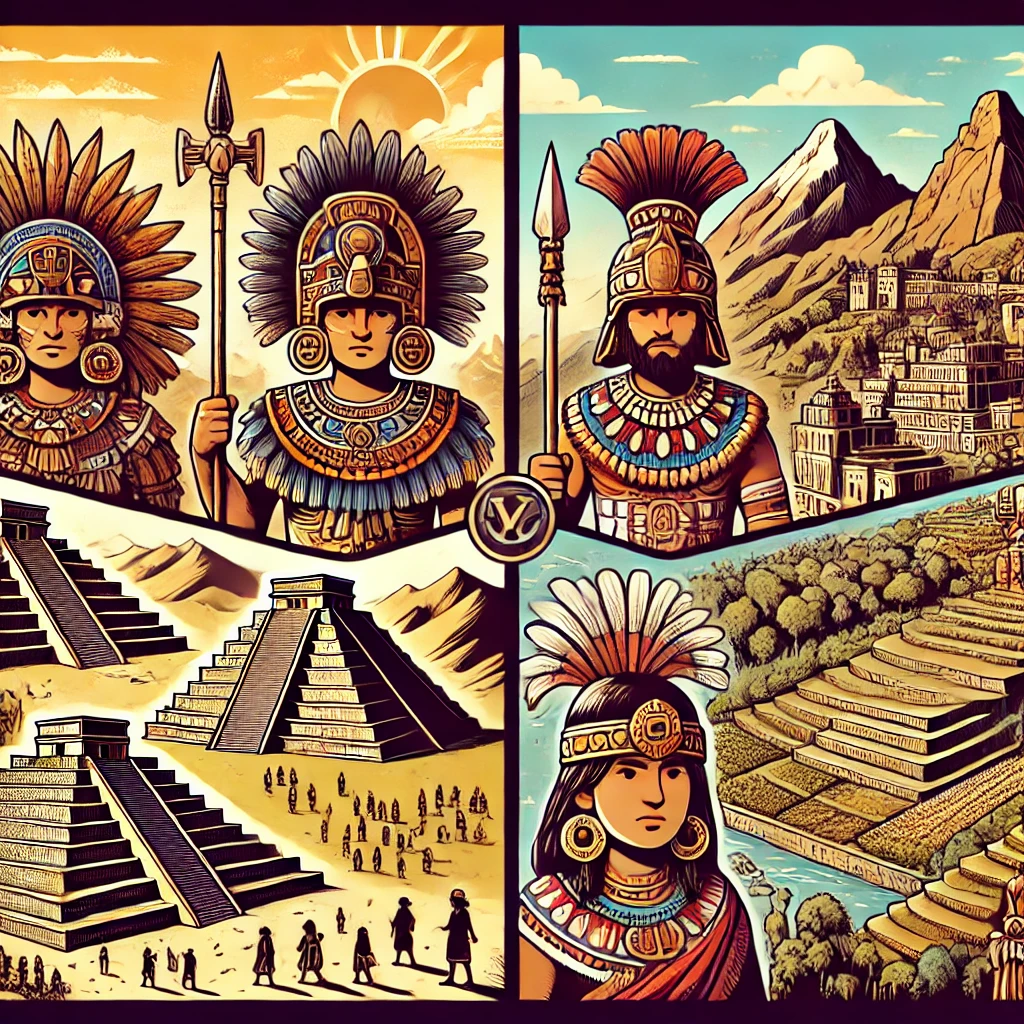Explore the unique geographic challenges of the Andes and discover innovative agricultural techniques and eco-friendly building practices shaping sustainable living in the region.The Inca civilization, one of the most remarkable cultures of the ancient world, thrived in the rugged terrain of the Andes Mountains. This unique geographical setting presented significant challenges, but the Incas demonstrated remarkable ingenuity in overcoming them. From the steep slopes that defined their homeland to the varied climates encountered at different altitudes, they developed innovative agricultural techniques that harnessed the land’s potential. Their approach to construction also reflected a profound understanding of their environment, leading to eco-friendly building practices that have withstood the test of time. In this blog post, we will explore the resourceful methods the Inca employed to adapt to their physical environment, shaping their culture and ensuring the survival of one of history’s greatest civilizations. Join us as we delve into the remarkable strategies that allowed the Incas to flourish despite the challenges of their mountainous world.
Geographic Challenges in the Andes
The Andes mountain range, stretching across several countries in South America, presents numerous geographic challenges that have significantly impacted the lives of those who dwell within its breathtaking landscapes. The rugged terrain, high altitudes, and varying climates create a complex environment that demands adaptation and ingenuity from its inhabitants, notably the Inca civilization.
One of the most formidable challenges of the Andes is its elevation. With many areas exceeding 3,000 meters above sea level, the thin air can make it difficult to breathe, particularly for those not acclimatized to such conditions. This elevation also limits agricultural productivity as crops often struggle to thrive at higher altitudes. To combat this, the Incas developed a range of agricultural techniques, including the construction of terraced farming, which allowed them to utilize sloped land for more effective cultivation.
Additionally, the climate in the Andes varies drastically depending on the altitude, resulting in a mix of microclimates. Some regions experience extreme cold, while others are prone to excessive rainfall. The Incas adapted by diversifying their crops and developing varieties suitable for specific altitudes and climates, ensuring food security despite the unpredictable weather patterns. Such innovations enabled them to thrive in an otherwise challenging environment.
Innovative Agricultural Techniques
The Inca civilization faced numerous challenges posed by their unique geographical environment in the Andes mountains. To thrive in such a rugged landscape, they developed several innovative agricultural techniques that allowed them to maximize crop yields and sustain their population.
- Terracing: The Inca utilized steep hillsides by creating flat terraces. This not only prevented soil erosion but also enabled efficient water drainage and farming on slopes that would otherwise be unusable.
- Aqueducts: They constructed intricate irrigation systems to transport water from streams to terraces. These aqueducts helped in maintaining optimal moisture levels for crops, even in dry spells.
- Crop Diversification: The Inca cultivated a wide variety of crops like potatoes, quinoa, and maize. This practice of diversification helped to ensure food security and resilience against pests and diseases.
- Fertilization Techniques: They used natural fertilizers like guano (bird droppings) and compost to enhance soil fertility, promoting healthier crops and higher yields.
These innovative techniques not only showcased the Inca’s adaptability but also their understanding of sustainable agricultural practices that respected their environment. By leveraging the natural landscape instead of trying to conquer it, they created a sophisticated agricultural system.
The successful implementation of these methods allowed the Inca to not only survive but to thrive in some of the most challenging conditions on earth. Their agricultural innovations laid the groundwork for successful food production that supported their complex society and contributed to their lasting legacy.
Today, many of these ancient techniques are still relevant and are being studied for their sustainable practices, offering insights into modern agriculture and environmental management.
Eco-Friendly Building and Architecture
The Inca civilization is renowned for its impressive architectural achievements, many of which demonstrate a deep understanding of their physical environment. One of the most notable features of Inca architecture is its eco-friendly approach, utilizing local materials and sustainable building techniques that have stood the test of time.
The Incas constructed their structures primarily from stone, which not only provided durability but also blended harmoniously with the surrounding landscape. The use of ashlar masonry—where stones are cut to fit together without the need for mortar—allowed buildings to withstand the frequent earthquakes in the region. This technique exemplifies how the Incas adapted their architectural styles to the unique geological challenges they faced.
Additionally, the Inca built their cities and agricultural terraces to take advantage of the natural terrain. For example, they often constructed their structures on mountaintops or hillsides, which not only improved air circulation but also provided critical drainage, preventing erosion and maintaining soil health. This commitment to building in harmony with nature is a hallmark of eco-frie
Frequently Asked Questions
The Inca primarily adapted to the rugged terrain of the Andes Mountains, characterized by high altitudes, diverse ecosystems, and varying climates.The Inca developed terrace farming techniques to create arable land on steep slopes, utilizing irrigation systems to manage water from mountain streams.The Inca used locally sourced materials such as stone, adobe, and wood to construct their buildings, which were designed to withstand earthquakes.The Inca built an extensive network of roads and bridges, adapting their transportation methods to navigate the challenging mountainous terrain, facilitating trade and communication across their empire.The Inca utilized sophisticated aqueducts and canals to channel mountain water for irrigation and domestic use, allowing them to cultivate crops in arid regions.The Inca domesticated llamas and alpacas for transportation and wool, effectively utilizing these animals as pack animals in the rugged Andean terrain.The Inca's polytheistic beliefs led them to revere natural elements such as mountains and rivers, which influenced their agricultural practices and the timing of planting and harvesting based on seasonal deities.


